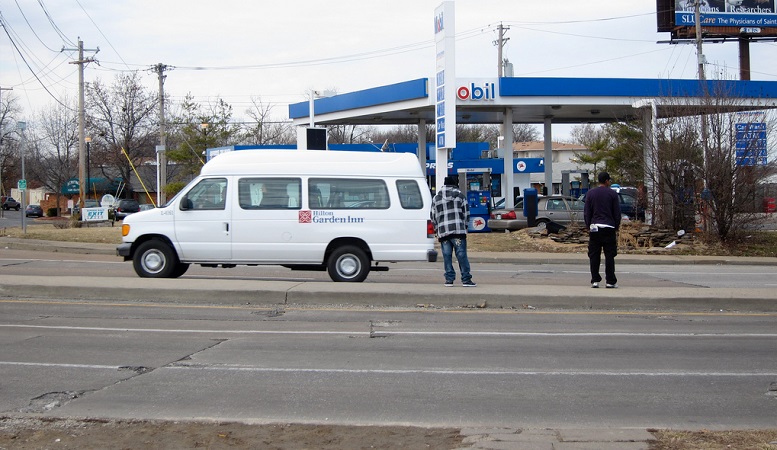Over the past few years, cheap gas has enticed a growing number of Americans to drive more miles in less fuel-efficient cars, potentially wreaking havoc on carbon emission targets. But that’s far from the only problem associated with more driving.
The National Highway Traffic Safety Administration (NHTSA) recently published preliminary findings regarding traffic death data from 2015, and thus far, it looks grim. Overall, motor vehicle deaths increased 7.7 percent last year, reaching upwards of 35,200 victims. If these projections are accurate, then 2015 will have been the deadliest year since 2008, which saw 37,423 deaths on American roads.
People walking and biking represent an increasing share of fatalities, rising at a rate faster than that of any other victim type. Fatal crashes involving pedestrians and bicyclists increased significantly, by 10 percent and 13 percent respectively, compared to 2014 data. Pedestrian and bicyclist deaths accounted for 16 percent of all traffic fatalities in 2014, but they made up a significantly larger share of all traffic fatalities in New York (27 percent) and New Jersey (25 percent).
The sharp rise in traffic deaths is alarming especially considering the general downward trend in the past decade. Still, that decline has been sluggish compared to peer nations. A recent report by the Center for Disease Control and Prevention (CDC) also revealed that between 2003 and 2013, the U.S. had the lowest percentage decline of motor vehicle deaths compared to 19 other high-income countries. The average rate of decline in crash fatalities per 100,000 people among those nations was 56 percent; in the U.S., it fell just 31 percent. If the U.S. crash rate equaled the average of the other 19 nations, more than 18,000 lives could be saved every year. The CDC also noted that U.S. drivers were more likely to engage in certain “major risk factors,” including not wearing seat belts, speeding or driving while impaired.
The NHTSA previously found that driver behavior critically attributed to crashes roughly 94 percent of the time. The two top-cited critical reasons for these crashes were recognition errors (41 percent), such as inattention and distraction, and decision errors (33 percent), such as speeding.
There are many factors–street design, police enforcement, driver education–that will determine whether we see another year of increased traffic deaths. But either way, we’ve got our work cut out for us: auto sales in the U.S. are on track to break last year’s record, marking the seventh consecutive year of sales growth. And so long as gas is cheap, Americans will continue to drive a record-breaking number of miles.


[…] on the Network today: Mobilizing the Region says low gas prices make it harder to reduce traffic deaths. Transit Columbus launches a petition […]
[…] The jump in traffic fatalities coincides with sinking gas prices and an uptick in driving. During the first half of 2016, U.S. motorists collectively drove 3.3 percent more compared to last year, reaching 1.58 trillion miles traveled. The recent upswing in miles driven has been linked to the availability of cheap gas and a sharp increase in traffic deaths. […]
[…] The jump in traffic fatalities coincides with sinking gas prices and an uptick in driving. During the first half of 2016, U.S. motorists collectively drove 3.3 percent more compared to last year, reaching 1.58 trillion miles traveled. The recent upswing in miles driven has been linked to the availability of cheap gas and a sharp increase in traffic deaths. […]
[…] more miles compared to 2014, marking the largest increase in nearly 25 years. NHTSA attributed the hike in miles traveled to lower unemployment and cheaper gas […]